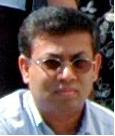A study on monkeys has shed new light on blindsight, a phenomenon in which patients with damage in the brain's primary visual cortex can tell where an object is, even when they cannot see it.
Professor Tadashi Isa and Dr. Masatoshi Yoshida, who led the study at the National Institute for Physiological Sciences in Japan, said that they had uncovered compelling evidence that blindsight occurs because visual information is conveyed bypassing the primary visual cortex.
Published in the Journal of Neuroscience, their findings have been backed by Japan Science and Technology Agency supported. For their research, the researchers recorded eye movements of the monkeys that had damage to one side of the primary visual cortex.
The animals were trained with an eye movement task for two to three months, enabling them to move their eyes to the correct direction where an object was even on the affected side of their visual fields. The researchers said that the animals' brains became able to feel where an object was without 'seeing' it. Read more ...
Professor Tadashi Isa and Dr. Masatoshi Yoshida, who led the study at the National Institute for Physiological Sciences in Japan, said that they had uncovered compelling evidence that blindsight occurs because visual information is conveyed bypassing the primary visual cortex.
Published in the Journal of Neuroscience, their findings have been backed by Japan Science and Technology Agency supported. For their research, the researchers recorded eye movements of the monkeys that had damage to one side of the primary visual cortex.
The animals were trained with an eye movement task for two to three months, enabling them to move their eyes to the correct direction where an object was even on the affected side of their visual fields. The researchers said that the animals' brains became able to feel where an object was without 'seeing' it. Read more ...




No comments:
Post a Comment